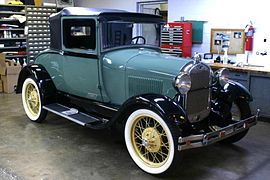Several months ago, my 2010 Toyota Prius was rear-ended while stopped by a Chevy Silverado driving probably 35-40 mph. My wife and I, the only occupants, were completely unharmed. The other driver's insurance company promptly acknowledged fault. The car's drivability was unaffected and so I didn't rush to do anything. I got an estimate for repair and then took the car to a body shop I've worked with before. It turns out the car is a total loss. Apparently modern cars are engineered to essentially fold up in a collision so that the vehicle bears the brunt of the impact. This protects the occupants, but it makes it expensive to repair the car. The insurance company gave me, IMHO, a fair price.
We have another vehicle but it would be good to replace the Prius so that my wife and I can be doing different things at once. So we have been carshopping. Now that we're old and (in my case) decrepit, we care about ease of access and egress, and we care a lot about visibility. (I've always disliked the lack of visibility in the Prius and getting in and out of the car was becoming somewhat uncomfortable.) So we are probably going to get a compact SUV.
That brings me to my questions. The Prius had a 37-foot turning circle. (This and other numbers come from Consumer Reports.) Model A that we are considering has a 36-foot turning circle. Model B has a 39-foot turning circle. It seems to me that the difference is big enough that I will notice it, particularly when I drive in Philadelphia or another city. Am I right?
In addition, the Prius was 69 inches wide. Model A that we are considering is 72 inches wide. Model B is 74 inches. I am inclined to think that Model B would require a significantly greater adjustment for me than would A. I should add that depth perception has never been my strong suit.
I have not mentioned anything else about the vehicles so that the discussion remains focused. I might open it up depending on the response.
I hope no one will view these as stupid questions, and I apologize if they are. Best wishes to all for a wonderful 2024 -- and for many Rutgers victories!
We have another vehicle but it would be good to replace the Prius so that my wife and I can be doing different things at once. So we have been carshopping. Now that we're old and (in my case) decrepit, we care about ease of access and egress, and we care a lot about visibility. (I've always disliked the lack of visibility in the Prius and getting in and out of the car was becoming somewhat uncomfortable.) So we are probably going to get a compact SUV.
That brings me to my questions. The Prius had a 37-foot turning circle. (This and other numbers come from Consumer Reports.) Model A that we are considering has a 36-foot turning circle. Model B has a 39-foot turning circle. It seems to me that the difference is big enough that I will notice it, particularly when I drive in Philadelphia or another city. Am I right?
In addition, the Prius was 69 inches wide. Model A that we are considering is 72 inches wide. Model B is 74 inches. I am inclined to think that Model B would require a significantly greater adjustment for me than would A. I should add that depth perception has never been my strong suit.
I have not mentioned anything else about the vehicles so that the discussion remains focused. I might open it up depending on the response.
I hope no one will view these as stupid questions, and I apologize if they are. Best wishes to all for a wonderful 2024 -- and for many Rutgers victories!
Last edited:


